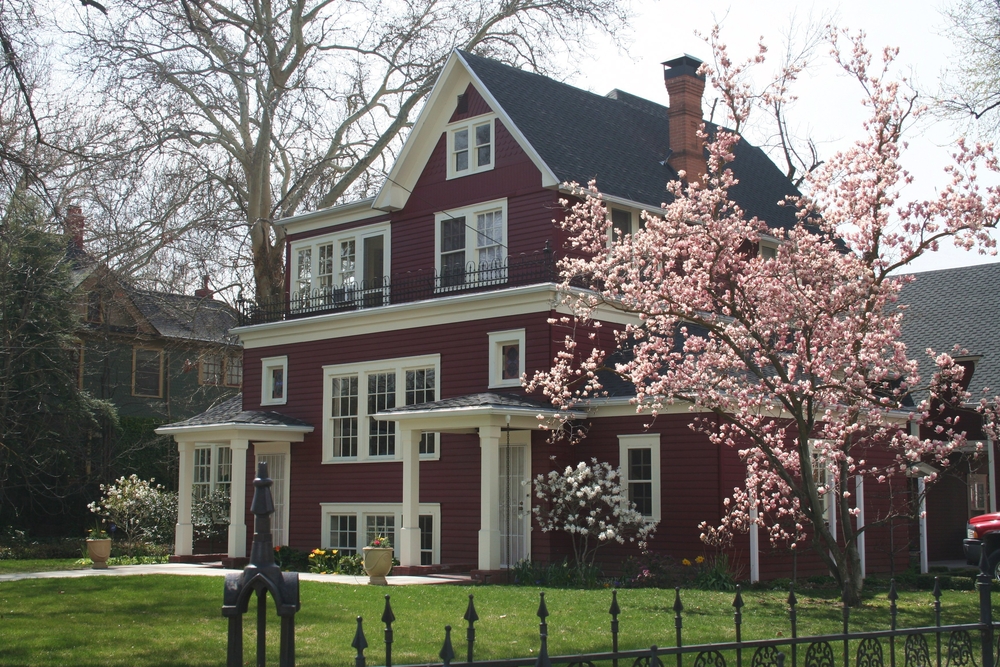When you think of moving to a more affordable city, you probably imagine lower rent and less expensive groceries. But beware, there are hidden costs lurking beneath the surface waiting to chip away at your budget. While some cities flaunt their affordability, they often come with their own sneaky expenses that can quickly add up. Navigating these can be tricky, especially when you’re blindsided by unexpected fees and costs that weren’t part of the brochure. Let’s uncover the 13 costs that can make an “affordable” city not so affordable after all.
1. Commuter Costs

When you move to a city that’s categorized as affordable, you may find yourself living further from your workplace. While rent may be cheaper, commuting costs can add up quickly, especially if public transportation is subpar. Sometimes, the city you move to might lack efficient public transport, meaning you’ll spend more on gas, parking, or rideshares. A report from the Center for Neighborhood Technology points out that transportation costs can often take up a larger portion of your budget than you might expect. These hidden costs of commuting can sneakily chip away at your savings, diminishing the financial benefits of cheaper rent.
Besides financial costs, commuting can take a toll on your quality of life. Long hours spent in traffic or on packed public transportation can add stress to your daily routine. More time spent commuting means less time for family, friends, and leisure activities. You might also find you’re spending more on convenience purchases, like coffee or take-out breakfast, just to make your commute bearable. All these factors combined can significantly impact your lifestyle, making that affordable city feel not so affordable after all.
2. Utility Expenses

In many “affordable” cities, utility costs can be surprisingly high, even if the rent is low. Heating in colder climates or air conditioning in warmer ones can significantly inflate your monthly expenses. New residents often overlook these costs, assuming they’ll be manageable, but they can quickly become a financial burden. Depending on the age and construction of your home, you might also face inefficiencies that increase your utility bills. These expenses can easily turn your affordable city into a costly one if you’re not prepared.
Utility costs can also fluctuate based on the time of year, causing unpredictable spikes in your monthly budget. Even small increases in rates can add up over time, especially if you’re not vigilant about your energy usage. Some cities also have higher water and waste management fees, which might not be immediately obvious. Learning to manage these costs effectively can be a challenge, especially if you’re new to budgeting for utilities. To keep your expenses in check, you may need to adopt energy-saving habits and consider investing in more efficient appliances.
3. Healthcare Fees

Healthcare can be a significant expense in many cities that advertise themselves as affordable. While some places might have low premiums, the quality and availability of healthcare services can vary widely. According to Dr. Sarah Thompson, a healthcare economist, hidden costs such as high deductibles and out-of-pocket expenses can catch newcomers off guard. These expenses can add up quickly, making accessing necessary medical services a financial burden. If you’re not prepared, these costs can eat away at the savings you anticipated when moving to a more affordable city.
Beyond the financial aspect, the stress of dealing with healthcare logistics can also impact your well-being. In some areas, you may find that appointments are harder to schedule or that you’re facing longer wait times for care. This can result in delayed treatments and increased healthcare costs in the long run. Moreover, if you’re forced to travel to another city for specialized care, those travel expenses add yet another layer to your healthcare budget. The real cost of healthcare can make any city seem less affordable than advertised.
4. Property Taxes

If you plan on buying a home in your new city, be prepared for the reality of property taxes. While some states boast lower property prices, they might offset this with higher tax rates. In many cases, these taxes can be an unwelcome surprise for first-time homeowners. A seemingly affordable mortgage can quickly become burdensome when property taxes are factored in. Over time, these taxes can increase, making it essential to consider them in your long-term financial planning.
Property taxes can vary significantly depending on the location within the city, which might surprise newcomers. If you’re not careful, you might end up in a neighborhood where property taxes are much higher than expected. Additionally, changes in local government policies can lead to increases in these taxes, affecting your budget unexpectedly. It’s crucial to research property tax rates in different areas and factor them into your decision-making process. Otherwise, you may find that homeownership in an affordable city is more expensive than you initially thought.
5. Groceries And Dining Out

While rent might be lower, food costs in some affordable cities can be surprisingly high. A study conducted by the Food Marketing Institute highlights how logistics and distribution can significantly impact food prices in different regions. In cities where food needs to be transported over long distances, you can expect to pay more for daily essentials. Eating out can also be pricier than anticipated, especially if you’re used to city living where inexpensive dining options are abundant. Before you know it, your grocery and dining expenses could be rivaling those in a more expensive city.
Not only do these costs affect your wallet, but they can also impact your lifestyle and dietary habits. You might find yourself opting for cheaper, less healthy options to stay within your budget. This could lead to increased expenses in other areas, such as healthcare, if your health suffers due to poor dietary choices. Additionally, the lack of diverse dining options might make it harder to enjoy social outings and experience the local culture. Without careful planning, food costs can quickly become a significant line item in your budget, undermining the affordability of your new city.
6. Education Costs

For families with children, education costs can add a serious strain on finances in so-called affordable cities. Public schools may be underfunded, leading parents to consider private or charter schools that come with hefty tuition fees. Even if you don’t have children, the quality of education can impact property values and community resources, indirectly affecting your living costs. The availability of extracurricular activities and educational resources might also be limited, prompting additional spending. Without factoring in these costs, you might find yourself financially stretched in an affordable city.
Moreover, the hidden fees associated with education can also add up. These can include expenses for school supplies, uniforms, and extracurricular activities, which may not be immediately obvious. If you have teenagers, college costs and preparatory courses can quickly inflate your budget. Balancing these with other family expenses can become challenging, especially if you’re unprepared. It’s vital to consider educational quality and associated costs when deciding to move to a new city, as they can significantly influence your overall cost of living.
7. Insurance Rates

Insurance rates, whether for your car, home, or health, can vary significantly across different cities. According to insurance expert John Miller, factors like crime rates, weather conditions, and local regulations can heavily influence these costs. Even if a city is advertised as affordable, you might find yourself paying more for insurance than expected. High insurance rates can offset the benefits of lower rent or property prices, making your overall cost of living higher than anticipated. It’s crucial to research and compare insurance premiums before making a move.
In addition to the financial aspect, the process of obtaining and maintaining various insurance policies can be time-consuming and stressful. You might need to deal with more paperwork and stricter requirements, depending on the city’s regulations. Any unexpected increases in premiums can disrupt your budget and financial planning. Moreover, inadequate coverage can leave you vulnerable to financial risks in case of emergencies. Navigating these insurance challenges can make living in an affordable city more complicated and costly than it initially seems.
8. Recreational Expenses

Living in a city often means access to various recreational activities, but these can come at a cost that isn’t immediately apparent. While some cities offer free or low-cost options, others may charge higher fees for access to parks, museums, and other attractions. If you’re accustomed to a vibrant cultural scene, you might find yourself spending more to maintain your lifestyle in a new place. This can include costs for memberships, event tickets, and travel to nearby attractions. Without careful budgeting, these recreational expenses can quietly pile up.
Besides the monetary aspect, limited recreational options can affect your quality of life. You may find it challenging to engage in activities that enrich your life and well-being. If local options are sparse or costly, you might need to travel to nearby cities, introducing additional expenses. The availability of diverse recreational activities often correlates with the overall cost of living, making it an important consideration. Planning for these costs can help ensure that you maintain the lifestyle you desire without overspending.
9. Unexpected Repair Costs

When moving to an affordable city, it’s common to encounter older homes or apartments that require frequent maintenance. While the initial cost may seem low, unexpected repairs can quickly add up. Older infrastructure often means outdated plumbing, electrical systems, and appliances, all of which can require costly repairs or replacements. Without a solid maintenance budget, you might find yourself facing significant financial stress. These repair costs can make your affordable living situation feel much less so.
In addition to the financial burden, dealing with constant repairs can be time-consuming and stressful. Finding reliable contractors and managing projects can disrupt your daily life. You might also encounter unexpected delays and costs that further strain your budget. If you’re renting, landlords may not always be proactive about maintenance, placing the burden on you to address issues. Preparing for these potential challenges can help prevent unexpected expenses from derailing your financial plans.
10. Seasonal Fluctuations

Some cities experience significant seasonal changes that can impact your cost of living in unexpected ways. Heating, cooling, and weather-related expenses can all fluctuate dramatically throughout the year. For example, in colder climates, you might face higher heating bills and the need for winter-specific clothing and gear. Conversely, hot climates can lead to increased air conditioning costs and expenses for sun protection. If you’re not used to these seasonal shifts, they can catch you off guard and stretch your budget thin.
Beyond energy costs, seasonal changes can also affect transportation and entertainment expenses. Snow removal, tire changes, and seasonal vehicle maintenance can add unexpected costs to your budget. Limited outdoor activities during certain times of the year might prompt you to spend more on indoor entertainment. Moreover, seasonal employment fluctuations can affect job stability and income consistency. Factoring these variations into your budget can help you manage your finances more effectively throughout the year.
11. Limited Career Opportunities

While an affordable city might attract you with a lower cost of living, it may not offer abundant career opportunities. Limited job prospects can affect your income potential, making it difficult to achieve financial stability. In some cases, you might find yourself accepting lower-paying jobs or working multiple positions to meet your financial needs. This can lead to job dissatisfaction and stress, affecting your overall quality of life. If career growth is a priority, researching job markets before moving is crucial.
Beyond initial employment challenges, limited career opportunities can also affect long-term financial planning. A lack of upward mobility might hinder your ability to save for future goals, such as homeownership or retirement. You might also face increased competition for available positions, leading to job insecurity. In some cases, limited professional networks can make it difficult to advance in your chosen field. Balancing affordability with career potential is essential to ensure a sustainable and fulfilling lifestyle.
12. Relocation Costs

The process of relocating to a new city involves expenses that can quickly add up, even if the city itself is affordable. Moving costs, such as hiring movers, renting a truck, or purchasing packing supplies, can be surprisingly high. If you’re relocating for work, you might also face temporary housing or travel expenses during the transition. These costs can strain your budget before you even settle into your new home. Without careful planning, relocation expenses can overshadow any potential savings gained from moving.
In addition to direct costs, the logistics of moving can introduce unexpected challenges. Changes in cost of living, finding new service providers, and adjusting to a new environment can all add stress and expenses. You might also face delays or issues with your move, further complicating your transition. The time and energy required to manage these tasks can be overwhelming, affecting your overall experience. Preparing for relocation costs and challenges can help ensure a smoother move and financial stability in your new city.
13. Social Costs

Moving to an affordable city often means leaving behind established social networks and support systems. The process of building new relationships can take time and may involve expenses that aren’t immediately obvious. For example, joining clubs, attending events, and participating in community activities can introduce social costs. If you’re not careful, these expenses can add up quickly, affecting your budget and lifestyle. Balancing social engagement with financial constraints can be challenging, especially in a new environment.
Beyond financial considerations, the emotional impact of social costs can also influence your overall well-being. A lack of familiar social connections might lead to feelings of isolation or loneliness, affecting your quality of life. You might also find it difficult to access support during challenging times, adding stress to an already complex situation. Building a new support network requires time, effort, and sometimes money, all of which can impact your experience in a new city. Preparing for the social aspects of moving can help ensure a smoother transition and a more fulfilling life in your new home.
This article is for informational purposes only and should not be construed as financial advice. Consult a financial professional before making investment or other financial decisions. The author and publisher make no warranties of any kind.








